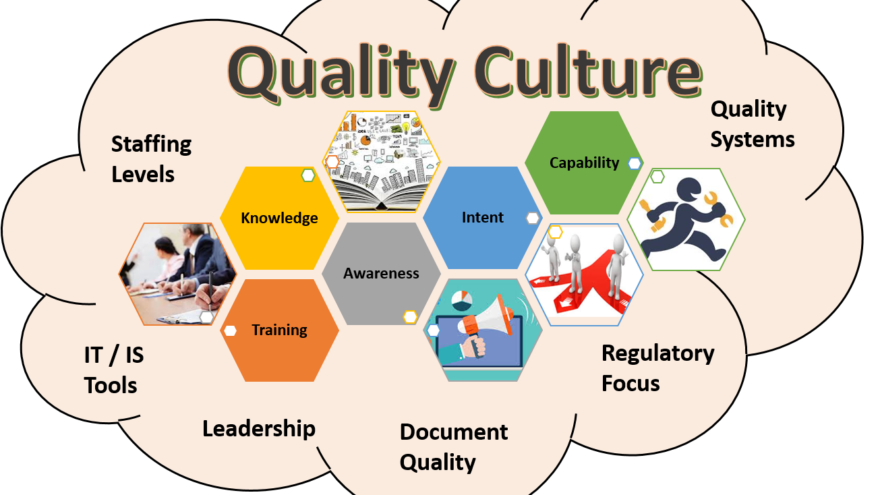Today, companies in all industries are being questioned about their attitude toward quality.
In pharmaceutical companies, it is important to establish quality systems and foster a quality culture.
Quality Assurance in Transition
The FDA first issued GMPs in 1963.
The 1900s-1950s is said to be the era of quality control. In other words, quality control was done by testing.
The challenge in these times is,
1.Testing Accuracy
2.Validity of test method
3.sampling
These included.
Most of the tests for pharmaceutical products are destructive tests, so they have to be sampling tests.
However, sampling inspection has its limitations. If there are quality abnormalities in the remaining products that were not sampled, defective products will be shipped.
The idea of validation was inspired by the drug-related deaths caused by large-volume injectable drugs in the United States in the 1970s.
The injectable drug in question was sterilized during the manufacturing process and conformed to sterility testing during shipment testing.
The manufacturer shipped the product after confirming that it conformed to testing, but a series of accidents occurred in which patients who were administered this product died.
The cause of the accident was that water contaminated with bacteria was used as cooling water, which caused the inside of the heat-sterilized vial to depressurize, and the contaminated water passed through the gap between the vial and the rubber stopper, contaminating the content liquid.
The shipping test was a sampling test for sterility and was not conducted on the entire number of vials, and the presence of contaminated vials could not be detected.
From this incident, the FDA realized the need to not only focus on the quality of the final product, but also to ensure that quality is ensured in the manufacturing process, and decided to incorporate the concept of validation into its regulations.
In 1978, the FDA moved from GMP to the current cGMP.
The 1960s-1990s is said to be the era of quality assurance.
As mentioned above, the concept of validation was included in GMP, and many inspections were conducted and points were raised accordingly.
As for the challenges,
1.Blind Compliance
2.Scientific understanding of the process
3.Don’t Tell! Don’t Ask!
These include
Blind Compliance is the concept of trying to comply in the dark because it is written in the regulatory requirements.
Essentially, the process must be scientifically understood and appropriate quality assurance must be possible.
Don’t Tell! Don’t Ask!” is a way of responding to inspections by not talking or asking anything unless asked.これThis is why many companies have experienced inspections and have reduced the number of findings as much as possible.
Later, concepts such as QbD (Quality by Design) and Risk Management and other concepts were introduced.
The 2000s are said to be the era of quality management.
As for the challenges,
1.Knowledge Management
2.Management Responsibility
3.Quality Culture
etc., and Quality Culture is exactly what is needed now! .
Companies must build and implement a quality system and then store knowledge (wisdom) in the organization.
Knowledge prevents the recurrence of past deviations and accidents, and moves the company to a higher level of quality assurance.
What is Qualitätskultur?
Quality Culture is defined as follows
- Attitudes, beliefs, and behaviors of the organization and individuals as a whole in an organization that seeks to deliver good quality medicines to patients.
- Shared principles of behavior and modes of thinking related to quality within the organization
- Quality culture is a set of attitudes and values adopted by a company to improve the level of quality in the production and provision of its medicines.
Firms should pay attention to the following
- Good understanding of your manufacturing environment
- Understanding of various regulations and guidelines and their essence
It is not enough that it is written in the regulatory requirements.
In other words, “No Blind Compliance! - Data-driven initiatives
Policy decisions should be based on data. - Active commitment to quality improvement by all employees
The process needs to be constantly reviewed and improved. - Management’s commitment to and appreciation of quality
It is necessary to constantly monitor and review whether the quality system is functioning and whether employee evaluations are appropriate.
This culture demands a commitment to quality assurance.
Why Data Integrity without Quality Culture?
Regulators feel there is a correlation between Quality Culture and data integrity.
Let me share with you the following articles.
FDAissued approximately 225 warning letters on data integrity between 2005 and 2016, including repeated human error deviations, inadequate training, system deficiencies, system certification or structure, improper procedures or failure to follow procedures, and intentional acts of tampering. The increase in data integrity citations has led regulators to issue a series of guidelines to reemphasize the importance of data integrity.
Without a Quality Culture, there would be no end to quality problems such as human error, cross-contamination, deviations, OOS, and recalls, let alone assurance of data integrity.
related product
[blogcard url=”https://ecompliance.co.jp/SHOP/L_DISOP.html” title=”【VOD】データインテグリティSOP作成セミナー”content=”製薬業界においては、患者の安全性を確保するためにデータインテグリティに関心が高まっています。
紙媒体であれ、電子記録であれ、記録(データ)や文書の信頼性を担保することは極めて重要です。
改正GMP省令では、データインテグリティに関する手順書の整備が求められます。
いったいどんな手順書を作成すれば良いのでしょうか。
データインテグリティに関する手順書は、企業や組織で1冊作成すれば良いというものではありません。
現存の関連するすべての手順書にデータインテグリティを保証するための手順を埋め込んでいかなければなりません。” ]
[blogcard url=”https://ecompliance.co.jp/SHOP/EL-006.html” title=”【セミナービデオ】データインテグリティSOP作成セミナー”
content=”製薬業界においては、患者の安全性を確保するためにデータインテグリティに関心が高まっています。
紙媒体であれ、電子記録であれ、記録(データ)や文書の信頼性を担保することは極めて重要です。
改正GMP省令では、データインテグリティに関する手順書の整備が求められます。
いったいどんな手順書を作成すれば良いのでしょうか。
データインテグリティに関する手順書は、企業や組織で1冊作成すれば良いというものではありません。
現存の関連するすべての手順書にデータインテグリティを保証するための手順を埋め込んでいかなければなりません。
インテグリティ(integrity)を辞書で引くと「誠実」という意味であることが分かります。
では、データが誠実ということは何を意味するのでしょうか。
その答えは、規制当局にとってデータが信用できるということです。
そのためには、データは作成されてから現在までの経緯(例:変更)がわかるようにしておかなければなりません。
つまり紙媒体であれ、電子記録であれ監査証跡が必要です。
監査証跡が必要ということは、データが生データだけではなく、メタデータも含めて完全でなければならないということです。” ]
[blogcard url=”https://ecompliance.co.jp/SHOP/P139.html” title=”【改正GMP省令対応シリーズ】
ーデータインテグリティ規程・手順書テンプレート付きー
当局要求をふまえた
データインテグリティ手順書作成の要点”
content=”【SOPサンプルデータ(word)がダウンロードできる】
~紙媒体/電子記録:記録(データ)や
文書の信頼性をどのように担保すべきか~” ]
[blogcard url= https://xn--2lwu4a.jp/qms-csv/ title=”QMS(手順書)ひな形 CSV関連” ]
]]>


Comment